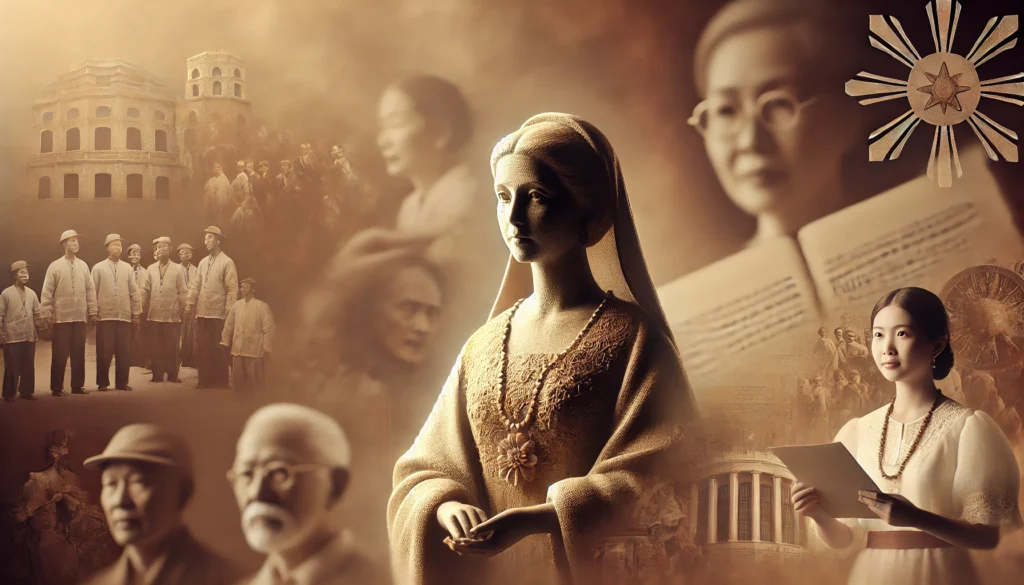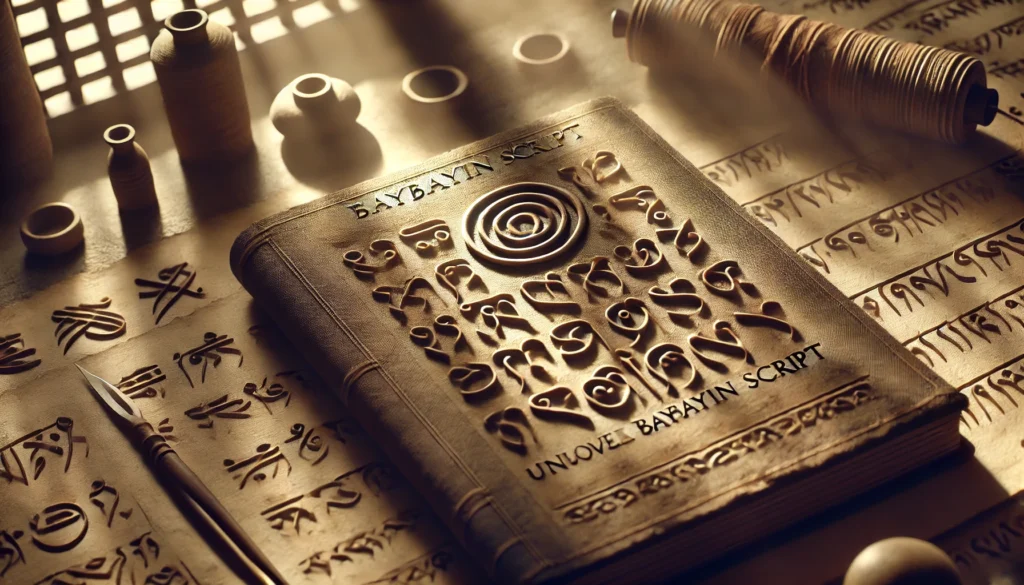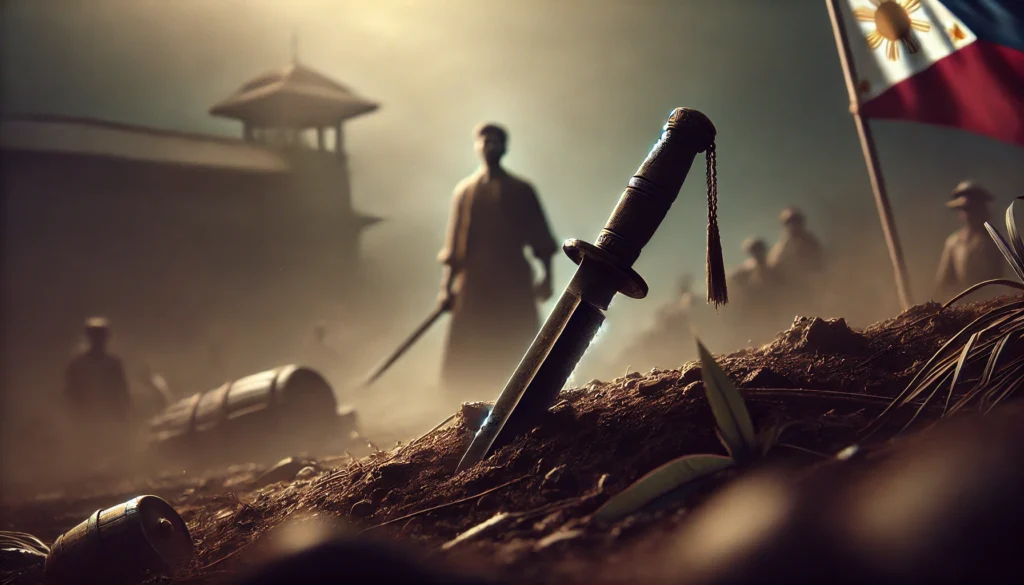In pre-colonial Philippines, women held significant roles in society, particularly in the spiritual and political realms. The babaylan and catalonan were female shamans who served as spiritual leaders, healers, and intermediaries between the mortal world and the spirit realm. These women were highly respected and played crucial roles in maintaining the spiritual and social balance of their communities.
Women in Leadership
Women in pre-colonial Philippine society also held positions of power and influence. Some notable examples include:
- Dayang Kalangitan: A ruler of Tondo who reigned in the late 14th to early 15th century
- Sima of Sulu: A 7th-century queen known for her strict adherence to the law
- Urduja: A legendary warrior princess of Pangasinan
These women demonstrate that leadership roles were not exclusively reserved for men in early Philippine society. Women could inherit property, engage in trade, and participate in decision-making processes within their communities.
Spanish Colonial Period: Challenges and Resistance
Impact of Spanish Colonization
The arrival of Spanish colonizers in the 16th century significantly altered the status of Filipino women. The introduction of Catholicism and Spanish patriarchal norms relegated women to more subordinate roles. However, this period also saw the emergence of notable women who resisted colonial rule and fought for their rights.
Women in the Philippine Revolution
During the Philippine Revolution against Spanish rule (1896-1898), women played vital roles both on and off the battlefield. Some notable women revolutionaries include:
- Gabriela Silang: Led a revolt against Spanish rule in Ilocos after her husband’s death
- Melchora Aquino: Known as “Tandang Sora,” she provided shelter and support to revolutionaries
- Teresa Magbanua: A military leader who fought in the revolutions against Spain and the United States
These women, among many others, demonstrated courage and leadership in the fight for Philippine independence.
American Colonial Period: Education and Suffrage
Access to Education
The American colonial period (1898-1946) brought significant changes to women’s education in the Philippines. The establishment of a public education system provided more opportunities for women to pursue formal schooling. This led to an increase in literacy rates and opened up new career possibilities for Filipino women.
The Suffrage Movement
One of the most significant developments during this period was the women’s suffrage movement. Filipino women fought for their right to vote, which was finally granted in 1937. Key figures in this movement included:
- Sofia de Veyra: First president of the National Federation of Women’s Clubs
- Concepcion Felix Rodriguez: Founder of the Philippine Association of University Women
- Pura Villanueva Kalaw: Suffragist and women’s rights advocate
Their efforts culminated in a plebiscite where women overwhelmingly voted in favor of suffrage, marking a significant milestone in Philippine women’s history.
World War II: Women in Resistance and Nation-Building
Women in the Resistance Movement
During World War II and the Japanese occupation (1941-1945), Filipino women played crucial roles in the resistance movement. They served as spies, couriers, and fighters in guerrilla units. Notable women during this period include:
- Josefa Llanes Escoda: Founder of the Girl Scouts of the Philippines and resistance member
- Fe del Mundo: Pediatrician who set up a children’s home during the Japanese occupation
- Yay Panlilio: Journalist and guerrilla fighter
These women demonstrated extraordinary courage and commitment to their country during one of its darkest periods.
Post-War Reconstruction
In the aftermath of World War II, women played significant roles in rebuilding the nation. They contributed to various sectors, including education, healthcare, and public service. The post-war period saw an increase in women’s participation in the workforce and politics.
Post-Independence Era: Women in Politics and Governance
Women in Political Leadership
Since gaining independence in 1946, the Philippines has seen several women rise to prominent political positions. Notable examples include:
- Geronima Pecson: First woman elected to the Philippine Senate (1947)
- Corazon Aquino: First female President of the Philippines (1986-1992)
- Gloria Macapagal-Arroyo: Second female President of the Philippines (2001-2010)
These women have made significant contributions to Philippine governance and have served as role models for future generations.
Women’s Representation in Government
The table below shows the percentage of women in the Philippine Congress over the years:
| Year | Lower House | Senate |
|---|---|---|
| 1998 | 12.4% | 13.0% |
| 2004 | 15.3% | 16.7% |
| 2010 | 22.1% | 13.0% |
| 2016 | 29.5% | 25.0% |
| 2019 | 27.2% | 29.2% |
While there has been progress in women’s political representation, achieving gender parity in governance remains an ongoing challenge.
Women in the Modern Workforce
Labor Force Participation
Filipino women have made significant strides in the workforce. According to the Philippine Statistics Authority, women’s labor force participation rate has steadily increased over the years:
| Year | Women’s Labor Force Participation Rate |
|---|---|
| 1990 | 47.5% |
| 2000 | 49.3% |
| 2010 | 50.1% |
| 2019 | 47.6% |
Despite some fluctuations, women’s participation in the labor force has remained relatively stable, reflecting their important role in the country’s economy.
Women in Leadership Positions
Filipino women have also made progress in attaining leadership positions across various sectors. A 2019 report by Grant Thornton International showed that 37% of senior management roles in the Philippines were held by women, one of the highest rates in the world.
Women’s Rights and Advocacy
Legislative Milestones
The Philippines has passed several laws aimed at protecting women’s rights and promoting gender equality. Some key legislation includes:
- Republic Act 6725 (1989): Strengthens the prohibition on discrimination against women
- Republic Act 7192 (1992): Women in Development and Nation Building Act
- Republic Act 9262 (2004): Anti-Violence Against Women and Their Children Act
- Republic Act 9710 (2009): Magna Carta of Women
These laws have provided a legal framework for advancing women’s rights and addressing gender-based discrimination and violence.
Ongoing Challenges
Despite legislative progress, Filipino women continue to face challenges, including:
- Gender-based violence
- Workplace discrimination
- Limited access to reproductive health services
- Underrepresentation in certain fields, particularly STEM
Addressing these issues remains a priority for women’s rights advocates and policymakers.
Women in Arts and Culture
Literary Contributions
Filipino women have made significant contributions to Philippine literature. Notable authors include:
- Paz Marquez-Benitez: Pioneering Filipino short story writer in English
- Lualhati Bautista: Acclaimed novelist known for her socially relevant works
- Jessica Hagedorn: Filipino-American author recognized for her novel “Dogeaters”
These writers, among many others, have shaped Philippine literature and brought attention to women’s experiences and perspectives.
Women in Visual and Performing Arts
Filipino women have also excelled in various artistic fields:
- Anita Magsaysay-Ho: Pioneering modernist painter
- Lea Salonga: Tony Award-winning singer and actress
- Monique Wilson: Theater actress and women’s rights advocate
These artists have not only achieved success in their respective fields but have also used their platforms to advocate for social issues, including women’s rights.
Women in Science and Technology
Pioneering Scientists
Filipino women have made significant contributions to science and technology, often breaking barriers in male-dominated fields. Notable scientists include:
- Fe del Mundo: First woman admitted to Harvard Medical School
- Lourdes J. Cruz: Biochemist known for her work on conotoxins
- Gavina Bernardo: First Filipino woman nuclear physicist
These women have not only advanced scientific knowledge but have also served as inspirations for future generations of Filipino women in STEM fields.
Challenges and Opportunities
While there has been progress, women remain underrepresented in many STEM fields in the Philippines. Efforts to encourage more women to pursue STEM careers include:
- Scholarships and grants specifically for women in STEM
- Mentorship programs
- STEM education initiatives targeting young girls
These efforts aim to address the gender gap in STEM fields and tap into the full potential of Filipino women in science and technology.
Conclusion: The Ongoing Journey
The role of women in Philippine history is a story of resilience, progress, and ongoing challenges. From the spiritual leaders of pre-colonial times to the politicians, scientists, and artists of today, Filipino women have consistently demonstrated their capabilities and contributions to society. While significant strides have been made in areas such as education, political representation, and legal rights, there is still work to be done to achieve true gender equality.
As the Philippines continues to develop and face new challenges, the role of women will undoubtedly remain crucial. By learning from the past, addressing current issues, and working towards a more equitable future, Filipino women will continue to shape the nation’s history and progress.
Disclaimer: This article aims to provide an accurate overview of the role of women in Philippine history up to 2023. However, historical interpretations and data may be subject to updates or revisions. Readers are encouraged to report any inaccuracies or provide additional information for review and potential updates to ensure the ongoing accuracy and relevance of this content.




